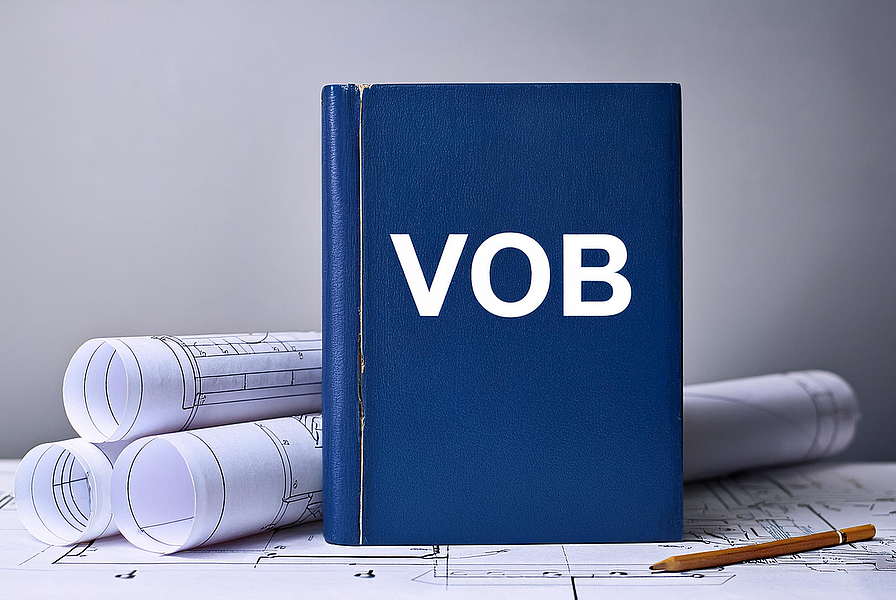The VOB Part A (Vergabe- und Vertragsordnung für Bauleistungen - Part A) forms the central regulatory framework for the award of construction contracts in Germany. This part of the VOB contains fundamental regulations that govern the entire process of awarding and awarding contracts. In this blog post, we take a detailed look at the key points of VOB Part A and explain how they structure the award of construction contracts and make them transparent.
Scope of application: Where VOB Part A applies The scope of application of VOB Part A defines the framework conditions under which the regulations apply. This part of the VOB is relevant for all public and private construction projects in which construction services are tendered and awarded. This includes new buildings, renovations, refurbishments and conversions. The scope of application specifies which construction projects and clients must comply with the regulations and thus ensures uniform standards in the awarding of contracts.
Procurement procedure: The path to awarding a contract The award procedure describes the steps leading to the invitation to tender, submission of tenders and selection of the best tender. This includes
Invitation to tender: A contracting authority is obliged to put the construction contract out to tender publicly and in some cases throughout Europe in order to give all potential bidders the opportunity to participate. The invitation to tender must contain all relevant information to enable bidders to submit a fair bid. Depending on the award amount, there are also various award procedures for public clients (e.g. direct award). The VOB is not mandatory for private clients.
Tendersubmission: Bidders submit their tenders in accordance with the requirements specified in the invitation to tender. These requirements often include technical details, cost statements and proof of suitability and calculation.
Tenderevaluation: The tenders are evaluated according to specified criteria described in the invitation to tender. Criteria may include price, quality, technical capability and other relevant factors. This process ensures that the contractor is selected on an objective and transparent basis.
Bidding and submission procedure: Participation and bid form The bidding and submission procedure describes how bidders must participate in the procurement process and submit their bids. This includes:
Conditions of participation: Bidders must fulfil certain requirements in order to participate in the procurement procedure. These requirements may include financial, technical or professional eligibility criteria.
Form of tenders: Tenders must comply with the requirements set out in the invitation to tender, including the form, content and evidence required. These regulations contribute to the standardisation and comparability of tenders and enable a fair evaluation.
Contractual relationships: From award of contract to contract The section on contractual relationships regulates the conditions for the conclusion and performance of the construction contract. This includes
Conclusion of the contract: This takes place after the contract has been awarded. The contract contains all the essential details of the construction work, including the costs, deadlines and technical requirements.
Contract execution: During the execution of the construction project, both parties must comply with the conditions set out in the contract. This includes regulations on the quality of the work, adherence to deadlines and adaptation of the contract in the event of changes or unforeseen events.
The interaction of VOB Parts A, B and C VOB Part A lays the foundations for awarding construction contracts and creates the framework conditions for transparent and fair award procedures. However, it is only in combination with VOB Parts B and C that the VOB becomes fully effective. While VOB Part A defines the rules for tendering and awarding contracts, VOB Part B regulates the legal aspects and contractual conditions during construction. VOB Part C supplements these with technical contractual conditions that ensure that the construction work is carried out and invoiced professionally and in accordance with uniform standards. Together, the three parts of the VOB guarantee a clear structure and binding nature throughout the entire life cycle of a construction project - from tendering to completion and operation.
Legal remedies: Protection against award violations The section on legal remedies sets out the procedures that bidders can use to take action against award violations. These include:
Complaints procedure: Bidders have the opportunity to lodge a complaint with the awarding authority or an independent awarding body if they believe that the award procedure does not comply with the legal requirements.
Legal protection: The provisions on legal remedies provide bidders with protection against unfair award procedures and enable them to challenge breaches of procurement law. This contributes to transparency and fairness in the award procedure and ensures that all parties have the same opportunities.
Adjustments and reforms to the VOB In recent years, there have been several adjustments and reforms to the VOB in order to meet the changing requirements of the construction industry. These include, for example, digital award procedures, which are being used more and more frequently, as well as the increased consideration of sustainability aspects, which must now also be taken into account in many award procedures. These developments show that the VOB is a dynamic set of rules that is constantly evolving to meet current requirements.
Conclusion: VOB Part A as a cornerstone for fair award procedures
VOB Part A forms the basis for the fair and transparent awarding of construction services. With its regulations on the scope of application, award procedures, contractual relationships, bidding and submission procedures as well as legal remedies, Part A ensures that the entire award process runs smoothly and fairly. A comprehensive understanding of these regulations is crucial for all parties involved in order to award construction contracts effectively and in compliance with the law and to ensure quality and efficiency in the construction industry.
In the next post, we will take a closer look at VOB Part B, which deals with the legal aspects and contractual conditions during the execution of a construction project.











